#Multi function tools
Explore tagged Tumblr posts
Text
A Complete Guide Multi-Functional Mole Removal Tool
Are you tired of dealing with unsightly moles on your skin? Have you tried countless products and treatments with no success? Look no further, because the Multi-Functional Mole Removal Tool is here to save the day. Say goodbye to expensive dermatologist appointments and hello to clear, smooth skin from the comfort of your own home.
0 notes
Text
Exploring Life & Business with Solomon Petersen Iv of weCleanGarages
https://nashvillevoyager.com/interview/exploring-life-business-with-solomon-petersen-iv-of-wecleangarages Today we’d like to introduce you to Solomon Petersen Iv Hi Solomon, so excited to have you on the platform. So before we get into questions about your work-life, maybe you can bring our readers up to speed on your story and how you got to where you are today? weCleanGarages.com proudly…

View On WordPress
#Bright and well-lit garage#Epoxy flooring#garage cleaning service near me#garage cleaning services#garage gym#garage organization#garagesale#Multi-functional garage space#organize tools#Upgraded garage door#weCleanGarages
0 notes
Text
Best Aluminium Ladder from EQUAL
EQUAL is one of the leading brands in India for industrial products and tool manufacturing. We have a wide range of products including weighing scales, weighbridges, aluminum ladders, platform trolleys, recliners, etc. We have a wide variety of ladders to serve throughout India and outside. Today we are representing our best ladders so that you can from them according to your use. These products are designed to meet a wide range of customers.
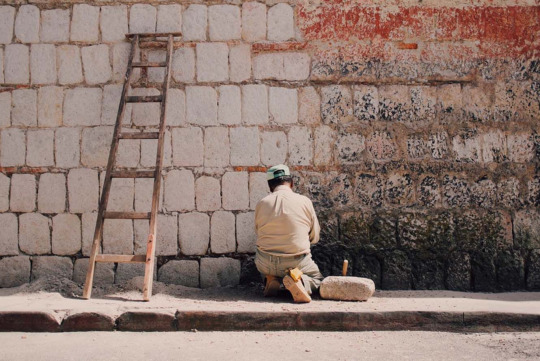
Types of EQUAL Aluminium Ladders
Multipurpose Ladder
Scaffolding Ladder
Household Ladder
Telescopic Ladder
Industrial Ladder
Multipurpose Ladder
Multipurpose ladders, as its name, suggests this type of ladders are designed to perform multiple works with one ladder. With this kind of ladder, you can perform several activities like changing a bulb, trimming trees, painting, cleaning a fan, etc. You can perform every activity with absolute ease. This sort of ladder can accomplish two or more tasks. Most people love this kind of ladder because of its ability to change into various positions to cater to a variety of tasks inside the house or outside. These utile ladders can open into a step ladder position for the rise and are absolutely self-supportable however. They can even be opened into an extended position if you have got to succeed in higher locations – however, you would like to possess some support to lean it against a small amount just like the standard one. Its ability to create the staging for planks or platforms whereas not in use, the ladder is completely closed and kept without any drawback.
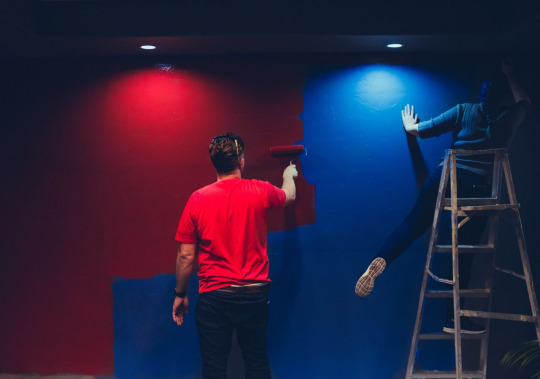
Scaffolding Ladder
Scaffolding Ladders are also called extension ladders. It can be useful in reaching high places or heights. However, they need to lean on walls, trees, or any other for support. Usually, this type of ladder has two components – base and fly. The base needs to be placed on the ground, whereas the fly is a movable piece that extends on top, permitting the extension of the ladder to reach even more height. In most of the cases, slippery is completed by using hooks or ropes. Extension ladders are capable of reaching higher places than alternative sorts.

Household Ladder
It is the most common type of ladder used for doing multiple activities for the home like changing the bulbs, hanging the plants, doing painting, cleaning, or any other kind of work at a high place. For all such activities, you need to have a robust and sturdy ladder that can keep you uplifted with complete safety.
EQUAL Household Ladder features anti-skid PVC shoes, which will protect you from skidding when you climb on it. The steps of the ladder are created with non-skid rubber like others, which makes it hassle-free, to use.
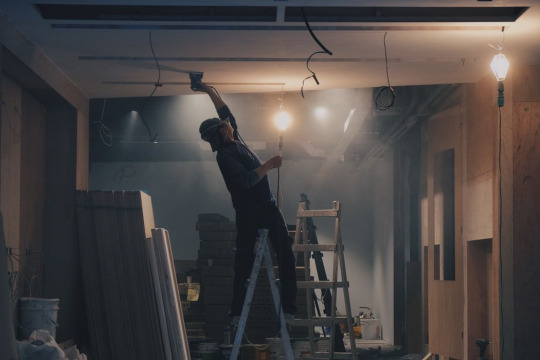
Telescopic Ladder
EQUAL Telescopic Ladder is the most trending ladder in the market, especially in India. The reason behind its popularity is its look, use, and portability. You can carry this telescopic ladder with ease and comfort. The space requirement for this ladder is very low compared to other Aluminium ladders in the market which make it unique. It is available in various sizes and segments so that you can choose according to your needs and use. It is a kind of traditional ladder with a modern edge. It is much safer and compact so you can keep it anywhere in a small area. If you are looking for a sturdy, compact, robust, and durable aluminum ladder that can be used daily, then EQUAL is the right choice. This ladder is right for a home, warehouse, shop, godown, office, etc.
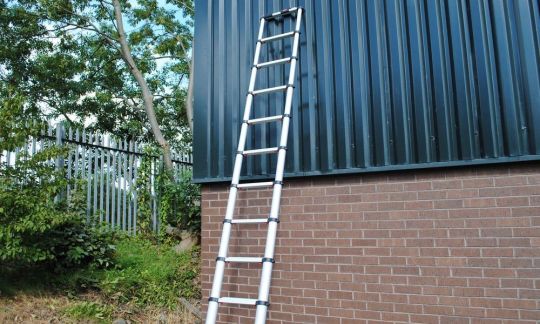
Industrial Ladder
Industries are the place where you cannot compromise with quality because it can be risky for your employees and you. So here we have a perfect solution for such industries. Our industrial ladder is created with T5-grade aluminum to withstand any condition. It comes with wide steps for a better grip.
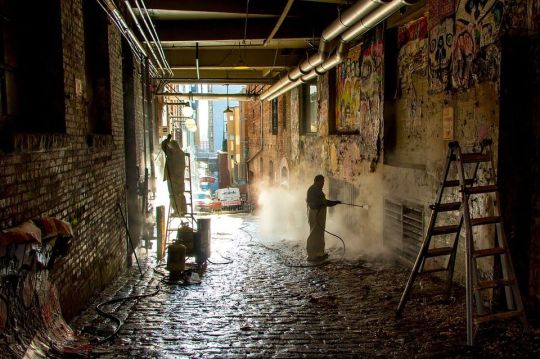
EQUAL industrial ladder is supplied with knee guards like other ladders within the list that provides additional safety while working.
With time, aluminium ladders have evolved a lot so that they become typical family equipment nowadays. Whether you have to change tube lights, clean fans, reach high cupboards, or paint the walls, you'll be able to complete various tasks safely and well with ladders.
But as there are many decisions to research, you may get confused while buying a ladder. If so, then scan our “buying guide” to make the right call or choice.
#Ladder Safety#Compact Design#Portable Ladders#Space Saving#Easy Storage#Aluminum Ladders#Lightweight Design#Telescopic Extension#Foldable Ladders#Construction Tools#Safety First#High Quality Ladders#Adjustable Height#Extendable Ladder#Professional Tools#Ergonomic Design#Sturdy Construction#Versatile Ladders#Ladder For All Tasks#All In One Ladder#Space Saving Ladder#Professional Ladder#Indoor Outdoor Ladder#Heavy Duty Ladder#Portable Ladder#Aluminum Ladder#Top Rated Ladder#Steel Ladder#Telescopic Ladder#Multi Functional Ladder
0 notes
Text
And here's Ncuti's!

also while im sonic screwdriver posting. SO funny that the design of it is such a big deal now when the OG was, literally, just a torch. and i don't mean that it looked like a torch. the prop was a pen torch.
#the 80s design is the best imho#in the tv movie he pulls it out of a toolbox and it just looks like it belongs there#the war doctor says 'they're scientific instruments not water pistols'#though i've always liked the idea of the sonic having interchangable heads#different functions making it look physically different#as it becomes more and more a multi-tool#Doctor Who#dw#the doctor
842 notes
·
View notes
Text

The 12 In 1 Multi Functional Screw Driver Kit 7392 is a versatile and essential tool for any DIY enthusiast or professional handyman.This compact and convenient kit features six different screwdriver heads, each designed to tackle a wide range of screw types and sizes.
The kit includes a flat-head screwdriver, a Phillips-head screwdriver, a Torx T5 screwdriver, a Torx T6 screwdriver, a Tri-wing screwdriver, and a Pentalobe screwdriver.
This wide variety of screwdriver heads makes the kit suitable for use with a broad range of electronics, appliances, and machinery.
The screwdriver heads are made from high-quality materials, ensuring durability and long-lasting use.
The ergonomic handle is designed for comfort and provides a firm and secure grip, reducing the risk of slips and accidents.
The kit is lightweight and easy to carry, making it ideal for use in a range of settings, from home repairs to outdoor adventures.
The screwdriver heads are easy to switch out, allowing for quick and efficient use.
In conclusion, the 12 In 1 Multi Functional Screw Driver Kit 7392 is a must-have tool for anyone who requires a versatile and reliable screwdriver kit.
With its high-quality materials, ergonomic design, and range of screwdriver heads, this kit is sure to become a staple in any toolbox.
#6in1#aisilin 7392#Aisilin 7392 Multi Functional 6 In 1 Screw Driver#aisilin 7392 multi functional 6in1 screwdriver#aisilin7392#aisilin7392multifinctional6in1crewdriver#mobile repairing#MOBILE REPAIRING TOOL#MOBILE REPAIRING TOOLS#multifnctional#multifunctional 6in1#Repairing Tools#screw driver#screwdrivr#mobile spare parts
1 note
·
View note
Video
youtube
Delixi Genuine Strong Pliers - Multi-Function | Electrician Tools
#youtube#strong pliers#delixi#electrician tools#multi-function#pliers#electricianstools#electricaltech#electricalrepair#electrical tools#electricaltools#technology#techtrends#diy
0 notes
Text
Befriending And Working With Crows

Crows have long been associated with witches due to their behavior, mystery, and connection to the supernatural. In folklore, they are seen as messengers between worlds, carrying secrets and omens. Witches were believed to communicate with or shape-shift into crows, using them as familiars to gather information or perform magical tasks. Their black feathers and eerie caws made them symbols of transformation, death, and hidden knowledge. This connection persists in modern witchcraft, where crows are often seen as guides for those practicing divination, shadow work, and spirit communication.
Crows are among the most intelligent birds, possessing problem-solving skills, advanced memory, and the ability to use tools. Studies have shown that they can recognize human faces, plan for the future, and even understand cause and effect. Their complex social structures and ability to communicate information indicate a high level of cognitive function, comparable to that of primates. Crows have been observed crafting tools from leaves and twigs, solving multi-step puzzles, and even holding grudges against perceived threats. Their intelligence makes them highly adaptable and capable of thriving in diverse environments.
Crows are highly intuitive, mysterious, and deeply connected to witchcraft, omens, and spirit work. These birds are known for their symbolism in folklore, association with deities like The Morrigan, Odin, and Hekate, and their ability to form strong bonds with humans. Befriending crows can be a rewarding experience, offering companionship, spiritual messages, and even small “gifts” from the birds themselves. Connecting with the crows isn't hard as they tend to be everywhere and their bravery and curiosity makes them willing to approach certain humans. They have senses of humor, empathy, critical thinking skills, and a lifespan of up to 30 years, all of which makes them excellent companions. Get to know the crows in your neighborhood.
🐦⬛Understanding Crow Behavior
Before approaching crows, it's essential to understand their nature:
• They are highly intelligent – Crows can recognize human faces, solve puzzles, and even speak.
• They have strong social bonds – They communicate within their flocks and even warn each other about potential dangers.
• They can be wary – Earning a crow’s trust takes patience, consistency, and respect.
• They have fantastic memories – A crow won't forget the face of a human that was kind to it and especially not that of one who was rude.
🐦⬛Attracting Crows to Your Space
To encourage crows to visit you regularly, follow these steps:
1. Offer Food Consistently
Crows love high-energy foods. Some of their favorites include:
• Unsalted peanuts (in-shell or shelled) – A crow favorite!
• Sunflower seeds – Nutritious and easy to scatter.
• Fruits (apples, grapes, berries) – Fresh or dried.
• Leftover meat scraps – A natural part of their diet.
• Hard-boiled eggs – A great protein source.

What to Avoid:
• Never feed crows processed, salty, or sugary foods.
• Avoid bread – it lacks nutrition.
• Do not leave large amounts of food – too much can attract unwanted pests.
2. Choose a Safe Feeding Spot
• Select a quiet, open area where they feel comfortable landing.
• Keep a routine – feeding them at the same time each day builds trust.
• If possible, create a dedicated offering space, like a small platform.
3. Provide Fresh Water
• A shallow birdbath or bowl of clean water can help attract crows, especially in dry seasons.
• Change the water frequently to keep it fresh.
🐦⬛Earning Their Trust
1. Observe From a Distance
• At first, let crows come and go without interference.
• Avoid sudden movements or loud noises.
• If they seem cautious, step back and let them approach at their own pace.
2. Speak to Them
• Crows recognize human voices and can distinguish between friendly and hostile tones.
• Greet them softly or whistle a simple tune when feeding them.
• Some witches even give their crows names, reinforcing a bond.
3. Leave Small Offerings
• In addition to food, place shiny objects (small trinkets, marbles, beads) as “gifts” for crows.
• Some crows may return the favor by leaving tokens like buttons, feathers, or shells.
🐦⬛Building a Magickal Relationship
Once crows recognize you as a friend, you can incorporate them into your spiritual practice:
1. Crow as a Spirit Ally
• If a crow visits during ritual work or divination, take note—its presence may carry a message.
• Crows can serve as psychopomps, guiding spirits between realms.
2. Divination & Omens
• A single crow cawing may indicate a warning or message.
• A group (a murder of crows) could symbolize change, transformation, or ancestral spirits.
• Here's some more information about counting crows.
3. Offering a Sacred Space
• Create a small altar outside with natural elements where you place food and gifts.
• Meditate near their space, listening to their calls and energy.
• Put up wards and cast protection magick for the crows.
🐦⬛Strengthening the Bond
• Be patient – Some crows take weeks or months to trust humans.
• Stay consistent – Regular feeding and positive interactions reinforce the bond.
• Respect their autonomy – Crows are wild and should never be captured or forced to interact.

🐦⬛Crow Spells
Crows can assist with your magick as well, through their presence and the lovely black feathers they often leave as gifts or lose through natural shedding. Here are some spells you can do with your crows.
Crow’s Omen Spell (For Divination & Messages)
Needed:
• A quiet outdoor space where crows gather
• A small offering (unsalted nuts, shiny objects, or seeds)
Instructions:
Sit in a place where crows are present and place the offering nearby. Close your eyes and ask the crows for a message:
“Messengers of fate, winged and wise,
Show me the truth with your keen eyes.
A sign, a word, a lesson true,
I call on crows to send their view.”
Observe their behavior. Watch how they move, call, or interact. Their actions may symbolize an answer to your question. Thank the crows and leave the offering as a sign of respect.
Crow’s Wisdom Spell (For Guidance & Insight)
Needed:
• A feather from a crow
• A small black candle
• A piece of paper and a pen
Instructions:
Light the black candle and sit quietly, focusing on a question or situation where you need insight. Hold the crow feather and say:
“Wise crow, keeper of secrets and sight,
Bring me knowledge, clear my mind this night.
Show me the path, help me see,
Reveal the truth and guide me free.”
Meditate for a few moments, then write down any thoughts, visions, or feelings that come to you. Let the candle burn down safely or snuff it out to use again.
Crow’s Shadow Cloak (For Invisibility & Stealth)
Needed:
• A black cloth or scarf
• A crow feather
• A small mirror
Instructions:
Hold the black feather and visualize yourself surrounded by a shadowy aura. Place the mirror face down on the cloth, symbolizing the reflection being hidden. Whisper:
“Dark-winged shadow, silent flight,
Hide me well, keep me from sight.
As the crow vanishes into the night,
Let me fade from every light.”
Wrap the feather in the cloth and carry it when you need to go unnoticed.

Crow’s Omen Spell (For Divination & Answers)
Needed:
• No physical tools, just observation
Instructions:
Find a place where crows are naturally present. Ask your question either aloud or in your mind.
Observe the crows for signs:
• A single crow cawing: A warning or negative response.
• A pair of crows flying together: A positive or cooperative outcome.
• A group of crows circling or gathering: Major change or important news coming.
• A crow bringing or dropping something near you: A strong affirmation or message from the spiritual realm.
Thank the crows for their wisdom.
Crow’s Curse Spell (For Revenge & Justice)
Needed:
• A black feather given by a crow
• A piece of paper with the target’s name
• A dark stone (obsidian, onyx, or jet)
Instructions:
Write the target’s name on the paper and place the crow’s feather over it. Hold the dark stone in your dominant hand and visualize the negative energy returning to its source. Say:
“As the crow flies, swift and free,
Let justice return threefold to thee.
No more harm, no more pain,
What was given, be reclaimed.”
Let the feather sit overnight. The next day, release it into the wind or place it somewhere the crows frequent.
Crow’s Guardian Spell (For Protection & Psychic Defense)
Needed:
• A crow feather
• A small black candle
• A piece of black string
Instructions:
Light the candle and hold the feather. Close your eyes and visualize a crow circling around you, forming a protective barrier. Tie a knot in the black string while chanting:
“Black-winged guardian, fierce and free,
Stand between harm and me.
No ill may pass, no foe may near,
On shadowed wings, keep my path clear.”
Carry the string as a charm of protection, or keep the feather in your home as a spiritual ward.
By observing, working with, and honoring crows, you can create powerful bonds that enhance protection, divination, communication, and justice in your magical practice. If nurtured properly, crows can become lifelong allies, offering wisdom, companionship, and even protection. Treat them well, and they may even become your loyal feathered familiars.

#crow#crows#counting crows#Crow spell#Taming crows#Befriending#companion animals#spirit animal#omens#divination#protection#baneful#wildlife#wild animals#birds#birdwatching#nature#nature witch#familiar#witch#magick#lefthandpath#witchcraft#dark#witchblr#witch community#eclectic witch#eclectic#pagan#animal totems
549 notes
·
View notes
Text
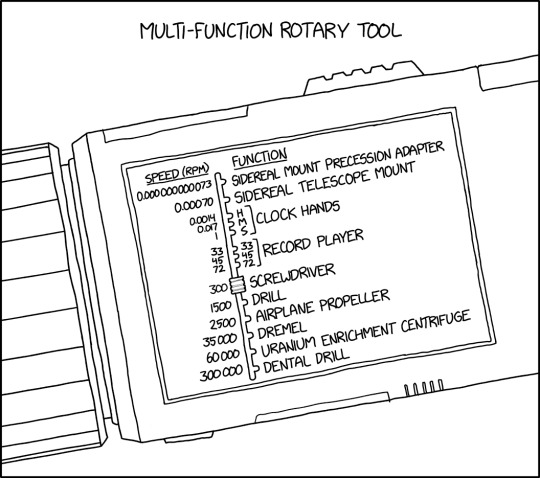
It was great until my thumb slipped and I accidentally launched my telescope into the air at Mach 8.
Rotary Tool [Explained]
Transcript Under the Cut
Multi-function rotary tool [A slider on the side of a tool with various settings.] Speed (rpm) Function 0.000000000073: Sidereal mount precession adapter 0.00070: Sidereal telescope mount [Following three are labeled "clock hands":] 0.0014: h 0.017: m 1: s [Following three are labeled "record player":] 33: 33 45: 45 72: 72 300: Screwdriver [Current setting] 1500: Drill 2500: Airplane propeller 35 000: Dremel 60 000: Uranium enrichment centrifuge 300 000: Dental drill
473 notes
·
View notes
Text
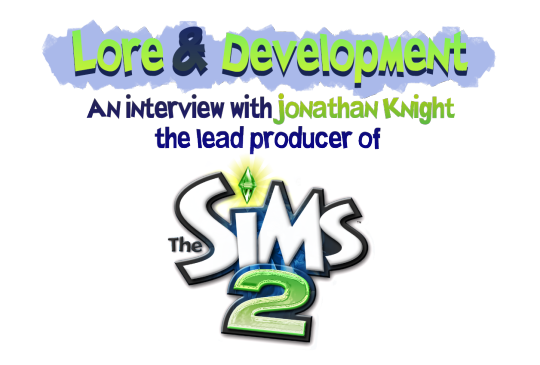

[JK] My first job was as an Assistant Producer for a video game company called Interplay in Irvine, CA. I had recently graduated from Boston University's School of Fine Arts with an MFA in Directing (I started out as a theatre nerd), but also had some limited coding experience and a passion for computers. It didn't look like I'd be able to make a living directing plays, so I decided to combine entertainment and technology (before it was cool!) and pitched myself to Brian Fargo, Interplay's CEO. He gave me my first break. I packed up and moved out west, and I've been producing games ever since.

[JK] I loved my time at EA. I was there for almost a full decade, and learned a tremendous amount about game-making, and met the most talented and driven people, who I remain in touch with today. EA gave me many opportunities, and never stopped betting on me. I worked on The Sims for nearly 5 years, and then afterwards, I worked on console action games as part of the Visceral studio. I was the Creative Director for the 2007 game "The Simpsons", and was the Executive Producer and Creative Director for the 2009 game "Dante's Inferno".

[JK] I haven't played in a long while, but I do recall that after the game shipped, my wife and I played the retail version for some time -- we created ourselves, and experimented with having a baby ahead of the actual birth of our son (in 2007). Even though I'd been part of the development team, and understood deeply how the simulation worked, I was still continually surprised at how "real" our Sims felt, and how accurate their responses were to having a baby in the house. It really felt like "us"!
Now for some of the development and lore related questions:

[JK] So I ended up in the incredibly fortunate position of creating the shipping neighborhoods for The Sims 2, and recruiting a few teammates to help me as we went along.
Around the same time, we started using the Buy/Build tools to make houses we could save, and also bring them into each new build of the game (correcting for any bugs and incompatibilities). With the import tool, we could load Sims into these houses. In time, this "vanguard QA" process turned into a creative endeavor to define the "saved state" of the neighborhoods we would actually end up shipping with the game.
On playtesting & the leftover sims data on various lots:
Basically, we were in the late stages of development, and the Save Game functionality wasn't quite working. In order to test the game properly, you really needed to have a lot of assets, and a lot of Sims with histories (as if you'd been playing them for weeks) to test out everything the game had to offer. So I started defining a set of characters in a spreadsheet, with all their tuning variables, and worked with engineering to create an importer, so that with each new build, I could essentially "load" a kind of massive saved game, and quickly start playing and testing.
It was fairly organic, and as the game's functionality improved, so did our starter houses and families.
The thought process behind the creation of the iconic three neighborhoods:
I would not say it was particularly planned out ahead of time. We knew we needed a few saved houses to ship with the game; Sims 1, after all, had the Goth house, and Bob Newbie's house. But there wasn't necessarily a clear direction for what the neighborhood would be for Sims 2. We needed the game to be far enough along, so that the neighborhood could be a proper showcase for all the features in the game. With each new feature that turned alpha, I had a new tool in my toolbox, and I could expand the houses and families I was working on. Once we had the multi-neighborhood functionality, I decided we would not just have 1 starter neighborhood, but 3. With the Aging feature, Memories, a few wacky objects, plus a huge catalog of architectural and decorative content, I felt we had enough material for 3 truly distinct neighborhoods. And we added a couple of people to what became the "Neighborhood Team" around that time.
Later, when we created Strangetown, and eventually Veronaville, I believe we went back and changed Pleasantville to Pleasantview... because I liked the alliteration of "Verona-Ville", and there was no sense in having two "villes". (To this day, by the way, I still don't know whether to capitalize the "V" -- this was hotly debated at the time!)
Pleasantview:
Anyway, to answer your question, we of course started with Pleasantview. As I recall, we were not quite committed to multiple neighborhoods at first, and I think it was called Pleasantville initially, which was kind of a nod to Simsville... but without calling it Simsville, which was a little too on the nose. (There had also been an ill-fated game in development at Maxis at the time, called SimsVille, which was cancelled.) It's been suggested that Pleasantville referred to the movie, but I don't think I ever saw that movie, and we just felt that Pleasantville kind of captured the feeling of the game, and the relaxing, simple, idyllic world of the Sims.
Pleasantview started as a place to capture the aging feature, which was all new to The Sims 2. We knew we had toddlers, teens, and elders to play with, so we started making families that reflected the various stages of family life: the single mom with 3 young kids, the parents with two teens, the old rich guy with two young gold-diggers, etc. We also had a much greater variety of ethnicity to play with than Sims 1, and we had all new variables like sexual orientation and memories. All these things made for rich fodder for a great diversity of families. Then, once we had family trees, and tombstones that carried the actual data for the dead Sims, the doors really blew open. We started asking ourselves, "What if Bella and Mortimer Goth could be characters in Sims 2, but aged 25 years? And what if Cassandra is grown up? And what if Bella is actually missing, and that could be a fun mystery hanging over the whole game?" And then finally the "Big Life Moments" went into the game -- like weddings and birthdays -- and we could sort of tee these up in the Save Game, so that they would happen within the first few minutes of playing the families. This served both as a tutorial for the features, but also a great story-telling device.
Anyway, it all just flowed from there, as we started creating connections between families, relationships, histories, family trees, and stories that we could weave into the game, using only the simulation features that were available to us. It was a really fun and creative time, and we wrote all of the lore of Sims 2 within a couple of months, and then just brought it to life in the game.
Strangetown:
Strangetown was kind of a no-brainer. We needed an alternate neighborhood for all the paranormal stuff the Sims was known for: alien abduction, male pregnancy, science experiments, ghosts, etc. We had the desert terrain, which created a nice contrast to the lush Pleasantville, and gave it an obvious Area 51 vibe.
The fact that Veronaville is the oldest file probably reflects the fact that it was finished first, not that it was started first. That's my guess anyway. It was the simplest neighborhood, in many ways, and didn't have as much complexity in terms of features like staged big life moments, getting the abduction timing right, the alien DNA thing (which I think was somewhat buggy up until the end), etc. So it's possible that we simply had Veronaville "in the can", while we put the last polish on Pleasantville (which was the first and most important neighborhood, in terms of making a good impression) and Strangeville (which was tricky technically).
Veronaville:
But my personal favorite was Veronaville. We had this cool Tudor style collection in the Build mode catalog, and I wanted to ship some houses that showed off those assets. We also had the teen thing going on in the aging game, plus a lot of romance features, as well as enemies. I have always been a Shakespeare buff since graduate school, so putting all that together, I got the idea that our third neighborhood should be a modern-day telling of the Romeo and Juliet story. It was Montys and Capps (instead of Montagues and Capulets), and it just kind of wrote itself. We had fun creating the past family trees, where everyone had died young because they kept killing each other off in the ongoing vendetta.

[JK] You know, I have never seen The Lone Gunmen, and I don't remember making any kind of direct references with the Strangetown Sims, other than the general Area 51 theme, as you point out. Charles London helped out a lot with naming Sims, and I'm pretty sure we owe "Vidcund" and "Lazlo" to him ... though many team members pitched in creatively. He may have had something in mind, but for me, I largely went off of very generic and stereotypical ideas when crafting these neighborhoods. I kind of wanted them to be almost "groaners" ... they were meant to be tropes in every sense of the word. And then we snuck in some easter eggs. But largely, we were trying to create a completely original lore.

[JK] Well, I think we kind of pushed it with The Sims 2, to be honest, and I remember getting a little blow-back about Bunny Broke, for example. Bunny Broke was the original name for Brandi Broke. Not everyone found that funny, as I recall, and I can understand that. It must have been changed before we shipped.
We also almost shipped the first outwardly gay Sims in those neighborhoods, which was bold for EA back in 2004. My recollection was that we had set up the Dreamers to be gay (Dirk and Darren), but I'm looking back now and see that's not the case. So I'm either remembering incorrectly (probably) or something changed during development.
In general we just did things that we found funny and clever, and we just pulled from all the tropes of American life.

[JK] The alien abduction started in Sims 1, with a telescope object that was introduced in the "Livin' Large" expansion pack. That's when some of the wackier ideas got introduced into the Sims lore. That pack shipped just before I joined Maxis in 2001; when I got there, the team had shipped "House Party" and was underway on "Hot Date". So I couldn't tell you how the original idea came about, but The Sims had this 50's Americana vibe from the beginning, and UFOs kind of played right into that. So the alien abduction telescope was a no-brainer to bring back in Sims 2. The male pregnancy was a new twist on the Sims 1 telescope thing. It must have been that the new version (Sims 2) gave us the tech and flexibility to have male Sims become pregnant, so while this was turned "off" for the core game, we decided to take advantage of this and make a storyline out of it. I think this really grew out of the fact that we had aliens, and alien DNA, and so it was not complicated to pre-bake a baby that would come out as an alien when born. The idea of a bunch of guys living together, and then one gets abducted, impregnated, and then gives birth to an alien baby ... I mean, I think we just all thought that was hilarious, in a sit-com kind of way. Not sure there was much more to it than that. Everything usually came from the designers discovering ways to tweak and play with the tech, to get to funny outcomes.

[JK] Possibly we were just testing the functionality of the Wants/Fears and Memories systems throughout development, and some stuff got left over.

[JK] I can't remember, but that sounds like something we would have done! I'm pretty sure we laid the groundwork for more stories that we ended up delivering :) But The Sims 2 was a great foundation for a lot of continued lore that followed.
--
I once again want to thank Jonathan Knight for granting me this opportunity and taking the time from his busy schedule to answer my questions.
#BURNING LORE QUESTIONS FINALLY ANSWERED!! :D#the sims 2#ts2#sims 2#ea games#ea#electronic arts#sims#the sims#strangetown#veronaville#pleasantview#jonathan knight interview#the sims 2 development#sims 2 development#sims 2 beta#I'm so glad I got this opportunity man.
1K notes
·
View notes
Text
Master Dialogue Writing Techniques for Engaging Fiction (For Writers)
(Beware, long post!)
As fiction writers, we all know that effective dialogue is essential for bringing our stories and characters to life. After all, the way our protagonists, antagonists, and supporting players speak to one another is one of the primary ways readers get to know them on a deep, intimate level. Dialogue reveals personality, uncovers motivation, and propels the narrative forward in a way that felt narration simply can't match.
But nailing natural, compelling dialogue is easier said than done. It's a craft that takes serious skill to master, requiring writers to have a keen ear for authentic speech patterns, a nimble handle on subtext and implication, and the ability to strike that delicate balance between being true to real-world conversation while also keeping things snappy, dynamic, and laser-focused on the story at hand.
If you're someone who struggles with crafting dialogue that truly sings, never fear. In this in-depth guide, I'm going to dive deep into the techniques and best practices that will help you elevate your dialogue writing to new heights. By the end, you'll have a toolbox full of strategies to ensure that every exchange between your characters is as gripping, revealing, and unforgettable as possible.
The Fundamentals of Effective Dialogue
Before we get into the more advanced nuances of dialogue writing, let's start by covering some of the foundational principles that all great fictional conversations are built upon:
Reveal Character One of the primary functions of dialogue is to give readers a window into who your characters are as people. The way they speak — their word choices, their tone, their body language, their turns of phrase — should provide vivid insight into their personalities, backgrounds, values, quirks, and emotional states.
Think about how much you can glean about someone just from how they communicate in real life. Do they use a lot of slang and shorthand? Are they verbose and flowery with their language? Do they struggle to make eye contact or fail to respond directly to questions? All of these subtle linguistic cues are powerful tools for crafting multi-dimensional characters.
Drive the Plot Forward While revelations about character are crucial, you also want to ensure that your dialogue is constantly pushing the story itself forward. Each exchange should feel purposeful, moving the narrative along by introducing new information, triggering plot points, creating conflict, or prompting characters to make pivotal decisions.
Dialogue that feels aimless or extraneous will ultimately bore readers and detract from the forward momentum of your story. Every line should have a clear intent or function, whether it's uncovering a hidden truth, setting up a future complication, or escalating the tension in a high-stakes moment.
Establish Distinct Voices In a story featuring multiple characters, it's crucial that each person has a clearly defined and differentiated way of speaking. Readers should be able to tell who's talking just from the rhythm, diction, and personality of the dialogue, without any additional context clues.
This doesn't mean every character has to have an over-the-top, hyper-stylized way of communicating. In fact, the most effective character voices often feel grounded and natural. But there should still be distinct markers — whether it's word choice, sentence structure, tone, or speech patterns — that make each person's voice instantly recognizable.
Convey Subtext While the literal words being spoken are important, great dialogue also traffics heavily in subtext — the unspoken emotional undercurrents, power dynamics, and hidden agendas that simmer beneath the surface of a conversation.
The most compelling exchanges happen when characters are communicating on multiple levels simultaneously. Perhaps they're saying one thing out loud while their body language and tone convey a completely different sentiment. Or maybe they're engaged in a subtle war of wits, trading verbal jabs that reveal deeper wells of resentment, attraction, or vulnerability.
Mastering the art of subtext is key to creating dialogue that feels layered, lifelike, and imbued with dramatic tension.
Strategies for Writing Snappy, Realistic Dialogue
Now that we've covered the foundational principles, let's dive into some specific techniques and best practices that will take your dialogue writing to the next level:
Omit Unnecessary Details One of the biggest mistakes many writers make with dialogue is bogging it down with too much extraneous information. In real life, people rarely speak in perfectly composed, grammatically correct full sentences. We stumble over our words, interrupt each other, trail off mid-thought, and pack our speech with filler words like "um," "uh," and "you know."
While you don't want to go overboard with mimicking that messiness, you should aim to strip your dialogue of any overly formal or expository language. Stick to the essentials — the core thoughts, feelings, and information being exchanged — and let the subtext and character voices do the heavy lifting. Your readers will fill in the gaps and appreciate the authenticity.
Master the Art of Subtext As mentioned earlier, crafting dialogue that's rich in subtext is one of the keys to making it feel gripping and lifelike. Think about how much is often left unsaid in real-world conversations, with people dancing around sensitive topics, conveying hidden agendas, or engaging in subtle power struggles.
To layer that sense of unspoken tension into your own dialogue, consider techniques like:
• Having characters contradict themselves or say one thing while their body language says another
• Utilizing loaded pauses, interruptions, and moments of uncomfortable silence
• Injecting subtle sarcasm, skepticism, or implication into a character's word choices
• Allowing characters to talk past each other, missing the unspoken point of what the other person is really saying
The more you can imbue your dialogue with that layered, emotionally-charged subtext, the more it will resonate with readers on a deeper level.
Establish Distinct Voices As mentioned earlier, ensuring that each of your characters has a clearly defined and differentiated speaking voice is crucial for great dialogue. But how exactly do you go about accomplishing that?
One effective strategy is to give each person a unique set of verbal tics, idioms, or speech patterns. Maybe one character is prone to long-winded, flowery metaphors, while another speaks in clipped, efficiency-minded sentences. Perhaps your protagonist has a habit of ending statements with questioning upticks, while the sarcastic best friend always punctuates their barbs with an eye roll.
You can also play with differences in diction, syntax, and even accent/dialect to further distinguish how your characters communicate. The key is to really get to know the unique personality, background, and psychology of each person — then let those elements shine through in how they express themselves.
Lean Into Conflict and Confrontation When it comes to crafting gripping dialogue, conflict is your friend. The most compelling exchanges often arise from characters butting heads, engaging in verbal sparring matches, or working through deep-seated tensions and disagreements.
Conflict allows you to showcase the high stakes, unresolved needs, and deeper emotional currents that are driving your characters. It forces them to make bold choices, reveals aspects of their personalities that might not otherwise surface, and generates the kind of dramatic tension that will really hook your readers.
Of course, you'll want to avoid making every single dialogue scene a full-blown argument. But learning to sprinkle in well-placed moments of friction, confrontation, and clashing agendas is a surefire way to elevate the energy and impact of your character interactions.
Read Your Dialogue Out Loud One of the most valuable tricks for ensuring your dialogue sounds natural and lifelike is to read it aloud as you're writing. Hearing the words out loud will quickly expose any clunky phrasing, overly formal grammar, or inauthentic rhythms that would otherwise go unnoticed on the page.
Pay close attention to how the dialogue rolls off your tongue. Does it have a smooth, conversational flow? Or does it feel stilted and unnatural? Are your characters' unique voices shining through clearly? Are there any spots where the back-and-forth starts to drag or feel repetitive?
Actively listening to your dialogue — and making adjustments based on how it sounds in the real world — is an essential part of the writing process. It's one of the best ways to refine and polish those character interactions until they feel truly alive.
Hopefully, this can help you all!
The key is to always keep your focus on authenticity. Ask yourself: how would real people actually speak?
Hey fellow writers! I'm super excited to share that I've just launched a Tumblr community. I'm inviting all of you to join my community. All you have to do is fill out this Google form, and I'll personally send you an invitation to join the Write Right Society on Tumblr! Can't wait to see your posts!

#writing#thewriteadviceforwriters#writeblr#creative writing#writing tips#on writing#writers block#how to write#writers and poets#writers on tumblr#authoradvice#author#fiction#indie author#writer#publishing#book writing#book quote#bookblr#books#writing advice#fiction writing#writing blog#writing tools#writing resources#novel writing#writer community#fantasy novel#readers#reading
883 notes
·
View notes
Text




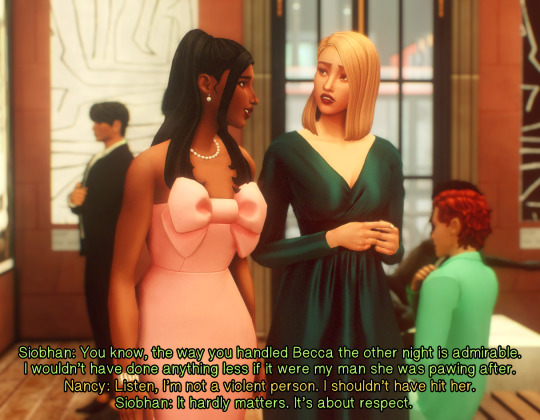
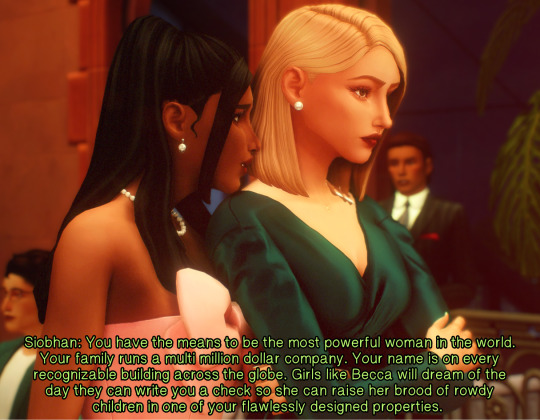

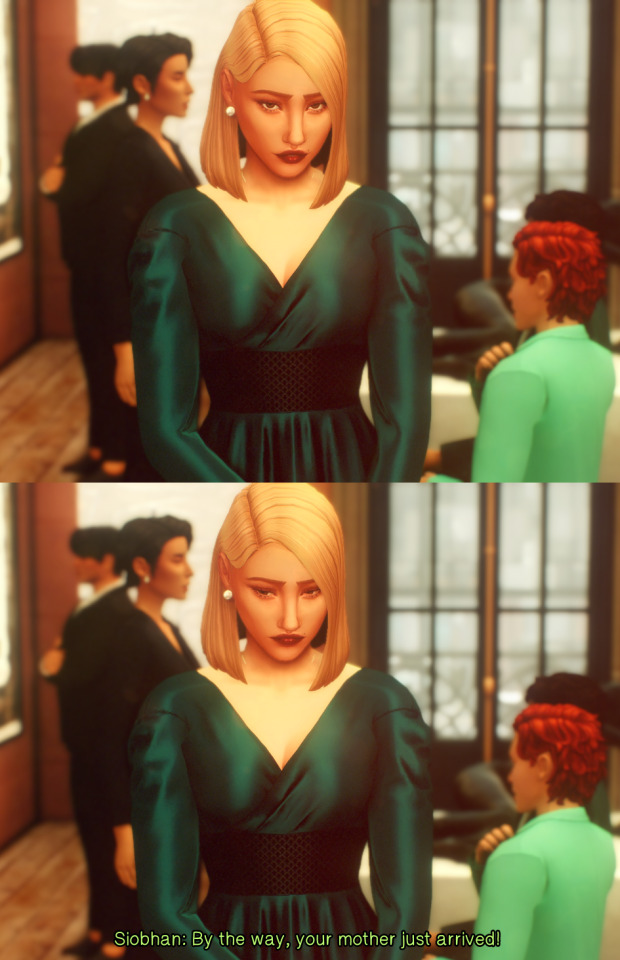




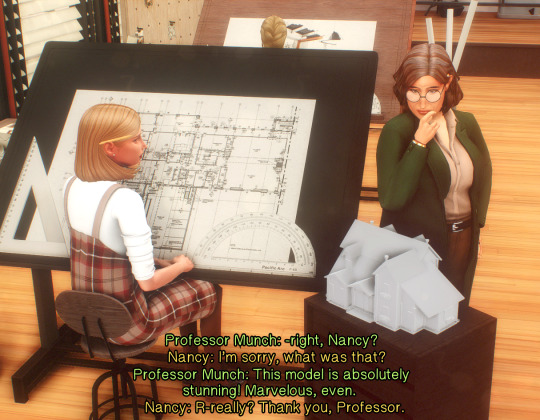






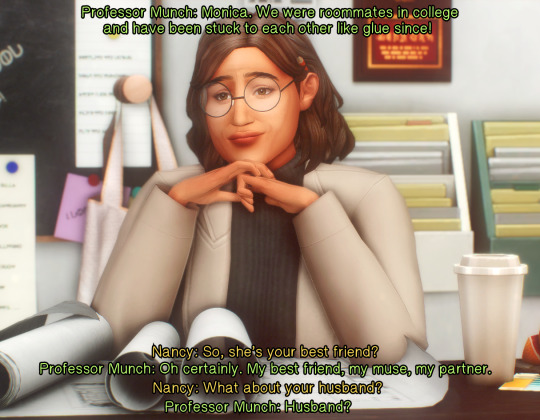





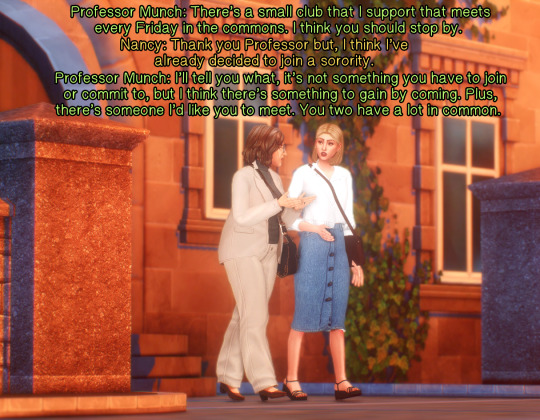


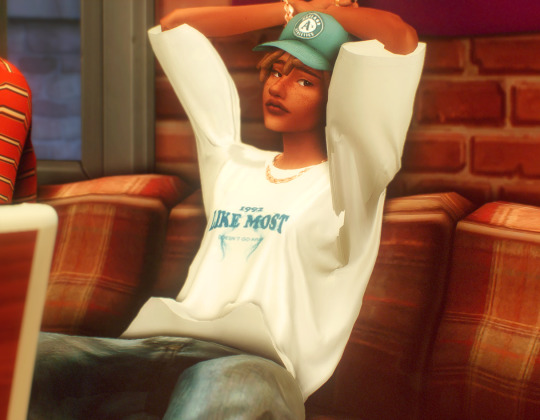
Prev / Next / Beginning / Pillowfort
AN: Next update will post Monday the 23rd , same time and same place! Going to start working on updating my game etc. <3
Transcript under the cut
Siobhan: There you are! Our guest of honor tucked away in the corner. You’re not hiding, are you?
Nancy: I never really liked crowds.
Siobhan: That won’t do, Nancy. Come. Lets chat.
Siobhan: You know, the way you handled Becca the other night is admirable. I wouldn’t have done anything less if it were my man she was pawing after.
Nancy: Listen, I’m not a violent person. I shouldn’t have hit her.
Siobhan: It hardly matters. It’s about respect.
Siobhan: You have the means to be the most powerful woman in the world. Your family runs a multi million dollar company. Your name is on every recognizable building across the globe. Girls like Becca will dream of the day they can write you a check so she can raise her brood of rowdy children in one of your flawlessly designed properties.
Siobhan: You’re a star, Nancy. It’s time you show everyone what it means to be a Landgraab. You can start by becoming a Theta.
Siobhan: By the way, your mother just arrived!
Nancy: Hello Mother.
Queenie: Nancy.
Nancy: Father couldn’t make it?
Queenie: No, I’m afraid he’s tied up in a prior engagement. Besides, I try not to bore him with my personal affairs. [murmurs] How provocative, these pieces.
Queenie: So you’ve made friends with the daughter of an adulterer. Is that what you thought would impress me? Well, at least she’s proactive. Your lack of involvement in any clubs or organizations shows just how lazy you are. It’s almost as if we’ve sent you to university to piss away our money yet again. When will you prove to me that you’re worth half the trouble you put your father and me through? And for the love of God, stop biting your nails! It’s disgusting.
Professor Munch: -right, Nancy?
Nancy: I’m sorry, what was that?
Professor Munch: This model is absolutely stunning! Marvelous, even.
Nancy: R-really? Thank you, Professor.
Professor Munch: Ah! No wonder! Your drawings are very compelling. The way you blend functionality with aesthetics is brillant! A true prodigy!
Professor Munch: I am very proud of you, Nancy. Keep it up.
Nancy: Hi Professor. I know I’m a little early for office hours, but I really wanted your thoughts on my blueprints.
Professor Munch: Nancy! Are you kidding! Anything for my star pupil. Take a seat.
Professor Munch: If I’m being honest, I don’t have much critique.
Nancy: Staying on top of my grades is really important to me. My GPA is 3.7 but I know I can do more to improve. I can do better-
Professor Munch: [huffs affectionately] Nancy! You are my brightest and best student! I’d say it’s in your blood. I haven’t seen such vision and passion in my student’s work since I taught your brother.
Nancy: Nathan was your student?
Professor Munch: Oh, Nathan was my star! In the short time I spent with him, he has shown me what true artistry looks like. That kid had an eye for detail. He always spoke so fondly of his little baby sister, Nan; he’d call you. [sighs] I miss him dearly.
Professor Munch: I thought of quitting and getting back into the field after he passed. I was devastated when I found out about the accident. My partner pushed me to continue teaching. She knew there was nothing I loved more than handing the tools to brillant kids like you and Nathan to shape our future.
Nancy: Partner? [frowns] Your...partner?
Professor Munch: Monica. We were roommates in college and have been stuck to each other like glue since!
Nancy: So, she’s your best friend?
Professor Munch: Oh certainly. My best friend, my muse, my partner.
Nancy: What about your husband?
Professor Munch: Husband?
Nancy: I- sorry. Nevermind.
Professor Munch: Talk to me, dear. What’s on your mind?
Nancy: I guess I don’t understand. You’re wearing a ring but you have no photos of your husband. You seem...close with her, in the photo.
Professor Munch: I was married once. We have three children together. Sweetest man alive. We’re still friends to this day. We both realized that we had our hearts in different places. In the end, I had my Monica. My soulmate.
Nancy: [sobs quietly]
Professor Munch: Oh, no. Nancy? Dear, are you alright?
Professor Munch: [softly] Oh, sweet darling. You’re hurting, aren’t you? Can I hold you? Is that ok?
Nancy: [nods once]
Professor Munch: You let it all out, you hear me? Just let it all out. I got you.
Nancy Narrates: [I wondered what kind of person I’d be had my mother held me like this]
Professor Munch: There’s a small club that I support that meets every Friday in the commons. I think you should stop by.
Nancy: Thank you Professor but, I think I’ve already decided to join a sorority.
Professor Munch: I’ll tell you what, it’s not something you have to join or commit to, but I think there’s something to gain by coming. Plus, there’s someone I’d like you to meet. You two have a lot in common.
Morgan: Holy shit, hey! It’s Nancy Landgraab! Get over here!
#the art of being seen#the landgraabs#nancy landgraab#siobhan fyres#dominic fyres#moira fyres#mia munch#morgan fyres#knox greenburg#darling walsh#sims 4 simblr#sims 4 stories#ts4 simblr#sims 4
251 notes
·
View notes
Note
do you like or dislike these houses? both? a mix?
Some of the places posted here I find horrifying. There are gradations of horror: hazardous, rubbish filled, either abandoned or still vaguely occupied houses; places that have clearly been abandoned for a long time and function as time-capsules; time-capsules that are also clearly lived-in, or have been until recently, the circumstances of which leave enough to the imagination to let it wander to dark places; or bold, unhuman interior design, unsettling enough to be conducive to fear. There are other places that don't necessarily evoke the same responses but which have their own peculiar creative qualities and which stumbling upon inspires curiosity about the world. Sometimes I see something and wonder what the people on this site would think of it. Often people will respond to one of these spaces by saying it evokes nostalgia. For me, nostalgia doesn't feel exactly like a happy emotion, though I get the impression that there's a popular conception of it as being largely positive (probably not unrelated to how heavily it's been appropriated as a marketing tool). The term originally referred to an actual sickness suffered by 17th century Swiss mercenaries, who missed the landscapes of their homeland. So there's always been a sense of loss, and physical distance between yourself and a remembered place, associated with it. And it feels to me to be connected personally with specific places and environments.
I grew up in a city that has a weird compulsion to demolish and rebuild itself every 30-40 years. I also moved around a lot as a kid, and a lot of the places I remember vividly have quietly disappeared at various points. Second-hand cars were less reliable when I grew up, and I spent a lot of time with my parents on public transport and walking through the city. There was a stalled construction site, which was basically a massive hole in the ground that had been left to rot and develop its own ecosystem, which became known as the Westralia Swamp. Walking over it in an enclosed catwalk was probably my first experience of something that approaches the subject of this blog.
Less hellish but more personally affecting were the disappearances of places I spent a lot of time in when I was young, like Raine Square, which was flattened at some point and replaced with a multi-storey glass mall. One of the areas I grew up in was a roughly 80% public housing estate built in the sixties, most of which has been demolished and replaced with unaffordable duplexes. I haven't been able to find many photos of what it used to look like, so in consequence the only visual record I have are my own vague memories. Which is a roundabout way of getting at my own responses to the images I find and post here, or maybe my own motivation and compulsion to go looking for them.
161 notes
·
View notes
Note
can you share your swiss/mountain headcanons pls? love your work!!
sjdjahshh u being so nice to me asking me this question???? I’m crying I have so much I wanted to share I’m scared that ppl will get annoyed I’ll just do a little I promise
Some of yall already know this probably but I personally like that each ghoul have some supernatural abilities(not necessarily has to be element related) and I LOVE -whoever named him I will thank you forever- they named a multi Swiss Army Knife. I’m mentioning this whenever I can in every language I know. I understand it’s bc he does everything on stage but I like it because it’s an actual tool and man-made??? and not like, from nature like other ghouls. In my mind Swiss ghoul is very uncanny💀…and he’s aware of himself being unhinge too. All of them are demon ofc with different stories but Swiss’ built more like a human with blood and flesh in my mind. He can metal-bend I like drawing sharp stuff around him. Enhances those pearly whites:)))



And piercings/Nails/staples ✨


Mountain is humanoid. He’s more tree than mammal. A zombie. His mental state is just being around somewhere and being included to a certain level. Very minding his personal space. He’s just there to observe (like what tree does). He doesn’t really have any functional organs they are all just there(or don’t).


Unlike Swiss who might had a sinful human life before he became a ghoul, a demon, Mountain has always been this way. Naturally formed…into a ghoul. (Might be a dead/zombie deer before he became a ghoul I also like that idea)
I like to think they are a more predator/prey leaning dynamic but always switching. Swiss might came off as the hunter at first but how can someone win in other’s natural habitat…Mountain might be his new toy and looks soft but there’re so much Swiss doesn’t know or unfamiliar with about his new prey. He got overly confident that he can’t see himself got lured into a honey-glazed trap. Just the games these two are secretly playing and absolutely up to no good, I can’t get enough <33
Btw this has nothing to do with AUs it’s just them normally speaking (?
78 notes
·
View notes
Text
Why You Should Try Eureka: Investigative Urban Fantasy Part 10: It Has Intense Action
This is part 10 of a multi-part series of posts about the awesome features of Eureka: Investigative Urban Fantasy, in no particular order.
Find the earlier parts here:
Part 1 Link: We Worked Hard on It!
Part 2 Link: It's Easy to Learn!
Part 3 Link: It's Easy to GM!
Part 4 Link: It's Easy to GM and Supports Narrative and Roleplay!
Part 5 Link: It Revolutionizes Investigation and Mystery Solving in TTRPGs
Part 6 Link: PCs are Not Just Mystery Solving Automatons
Part 7 Link: Excellent Time-Keeping Mechanics Keep the Pressure On
Part 8 Link: Fun and Easy Character Creation
Part 9 Link: Themes of Disability
For a while in its development, Eureka had a section dedicated to combat, but now that section is more broadly called “dangerous situations.” It’s rare, but dangerous situations will inevitably come up. The question is, will the PCs be prepared for them? Eureka has rules to cover everything from gunshot wounds to car crashes, from falling off buildings to drowning. If something bad can happen to a person, there’s probably a section in the rulebook covering how it would affect a Eureka PC mechanically. A lot of the times the answer will be they die, but how fast they die, and what they can do to save themselves in that time, is crucial.
Eureka takes a very “trad RPG” approach to this sort of thing, where violence and other dangers are something highly lethal, and therefore best avoided if the PCs are smart, but that the nature of what they’re doing means that it’s bound to happen eventually, and therefore the game rules need to provide a lot of “tools” and options within those situations, thereby creating agency over whether they live or die. PCs do not necessarily have to have “good” combat stats to survive, as many players so far can attest. It encourages them to be clever and cautious about things, and allows them to exorcise that cleverness and caution, without bogging the game down in too many numbers or charts.
Weapons will usually take any character down in one to two hits, and even when unarmed, characters have a wide variety of techniques that they can attempt, including the world’s first ever TTRPG grappling rules that are actually fun and advantageous!
Guns are as deadly in Eureka as in real life, and the type of gun matters a lot. That isn’t to say the exact model makes a huge difference, that would be too granular for what we’re attempting to do. A Glock 19 and a Beretta 92 would both fall under “Semi-Automatic Pistol” and function identically. Trust us, this all runs smoothly once you read it.
Bullets do 4 Penetrative Damage each, and most firearm categories are capable of firing multiple bullets within a single turn, each rolled separately. Direct hits are usually fight-ending, but that isn’t as easy as it sounds. Even with a high Firearms skill, these shots are being taken under extreme duress, and factors like cover, distance, movement, etc. will affect them too. Most shots fired will miss, and you might think that would be boring, but it’s not because of the next thing I’m going to talk about.
The Woo Roll
Named after director John Woo, the Woo Roll is a mechanic that’s makes it so that bullets don’t just disappear into thin air when they miss.

When any shot misses, a Woo Roll is made, which means something is going to happen that changes the situation as a result of that shot. (That’s one Woo Roll per turn, no matter whether one or thirty shots miss.) This roll determines whether the effect is good or bad for the shooter. A good result might mean that the shot hits a fire extinguisher behind the target, spraying him with foam and gas, disrupting his next shot. A bad result might mean the shot hits a gas line, and now the building is on fire. Usually the rule is that it’s whatever the most obvious and interesting thing within the confines of being good or bad for the shooter, but if there isn’t anything around, then we also have tables you can roll on.
Chase Mechanics
Combat is only likely to last a few rounds, but everything characters do in those rounds is crucial. These situations dynamic and deadly, and evolve rapidly, and if things are going south, run away!
Eureka has rules and incentives that can quickly shift the location of a conflict as one or more parties tries to flee. This works pretty similarly to combat, but, of course, the parties are moving and fighting across larger areas, causing the situation to evolve even more rapidly. Characters will have to overcome obstacles to keep ahead of their pursuers or catch up to their targets. These obstacles are rolled on a table that matches the environment the chase is happening in, heres a few highlights [images of entries]



As you can probably see, some of these obstacles can take a character out as easily as an enemy could. The kind of dynamic, cinematic car and foot chases these rules create are always something special.

#indie ttrpg#ttrpgs#ttrpg community#ttrpg tumblr#rpg#ttrpg#eureka: investigative urban fantasy#eureka#john woo#hard boiled#action movie#action movies#tabletop#noir#neo noir#tabletop rpg#ttrpg design#indie ttrpgs#eureka ttrpg#hong kong
41 notes
·
View notes
Text
For biologists, seeing is believing. But sometimes biologists have a hard time seeing. One particularly vexing challenge is seeing all the molecules in an intact tissue sample, down to the level of single cells, simultaneously. Detecting the location of hundreds or thousands of biomolecules—from lipids to metabolites to proteins—in their native environment allows researchers to better understand their functions and interactions. Unfortunately, scientists don't have great tools to accomplish this task. Now a multi-institutional research team has developed a tissue expansion method that enables scientists to use mass spectrometry imaging to simultaneously detect hundreds of molecules at the single cell level in their native locations. Their paper is published in the journal Nature Methods.
Continue Reading.
51 notes
·
View notes
Note
So I know you’ve given the old black dragon from Dungeons and Dragons a redesign in the pats but I thought I would ask for your thoughts in the redesign coming soon in the new handbooks. There is a video on YouTube where one of the designers is interviewed about the new dragon designs. He says they designed the dragons more as characters then creatures which likely influenced a lot of the design choices. They want this thing to look evil. Do you think the design has improved? I also want to know if there any major changes you would make. I know in the past you had issues with the horns.
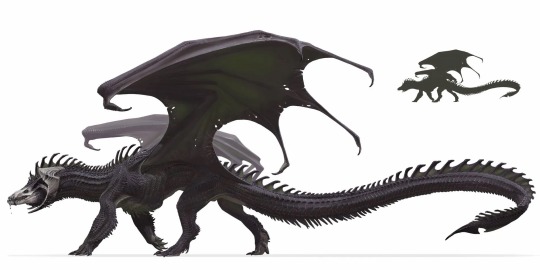
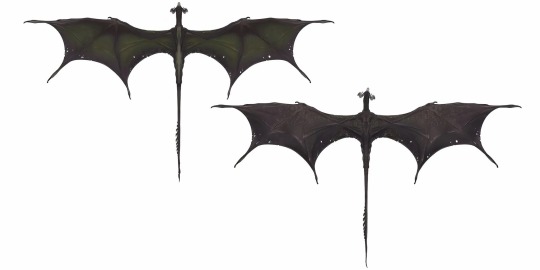
comparison time! old and new!

(image description: a side by side look at the old DnD 5e black dragon design and the new black dragon design. the old one is more multi colored and shows a variety of design choices that are common for making dragons look "cooler" but have no real function. the new design is more cohesively colored a very matte black with a white face and is anatomically more similar to a giant crocodile with long legs. end description)
I absolutely think the new design is so much better. the horn problem has been solved!!! my issue with the horns in the previous design was mostly that they just overlap the mouth! even taking into consideration how wide they might be, they line up directly with the open mouth and extend further forward than the mouth, making them a pretty huge impediment! but now the horns curve below the jaw and don't extend beyond it, so they're a lot less cumbersome! overall, this design and posing also makes so much better use of illustrative shape language, look at how little the body parts overlap each other! much cleaner. I appreciate the bony looking spines with minimal membrane between them, as opposed to the old version that just had the big sail fin on the neck for no reason. I kinda miss the striped coloration of the old one, but this new design is far more cohesively colored and so much more focused on really making it look like a black dragon, with nice subtle greens on the underside for that good ol fashioned countershading. I also like that the face is white to give it that skull-like vibe instead of shrinkwrapping the face to make it look like the underlying skull. overall, there is way less shrinkwrapping on the new design, it no longer feels like the skin has been vacuum sealed to the skeleton and musculature.
That said though, even considering the intention of making it look evil more than making it look like a real creature, why in the year 2024 are we still skimping on dragon wing membrane near the torso, making the wing fingers extend so far beyond the membrane, and adding random wing holes instead of making use of more interesting battle scars all over the body?
here is a very quick paint over to alter that and show how the design could just be tweaked a tiny bit and not lose any of its coolness while adjusting the things i have a pet peeve for
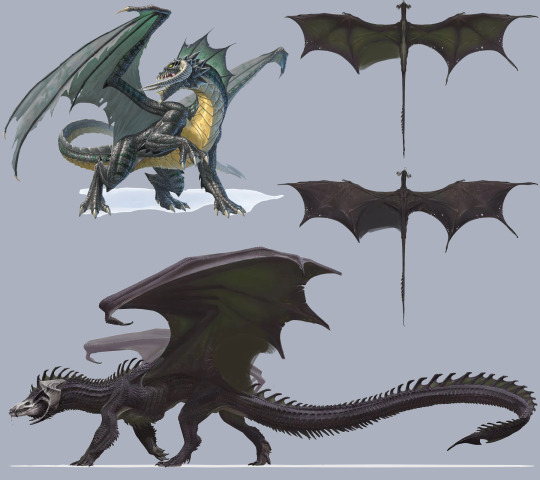
(image description: same as above, but now on the new black dragon design I have colored in the random holes in the wings, erased the overly extended wing fingers, and added more surface area to the wing membrane where it meets the body. end description)
could absolutely be done better, this was just my quick sloppy solution. even just adding a little more wing membrane would be good enough, I don't know why there is still this insistence on leaving such a massive gap between the body and the nearest wing finger. or leaving so much finger extended past the membrane. what are those fingers there for. why do they still have big claws. these dragons have proper forelegs, they clearly aren't using those big cumbersome wing hands for anything other than flying, and the thumb is perfectly useful as a gripping tool all by itself. the fingers only get extended like that for the Look, but i think there are other ways to make the wings look cool. like giving them interesting colors and patterns on the membrane! why not extend the facial coloring here to the wings? enhance the skeletal vibe by making the underside of the wing arms all pale, maybe put some striping on the membrane? that would be neat!
83 notes
·
View notes